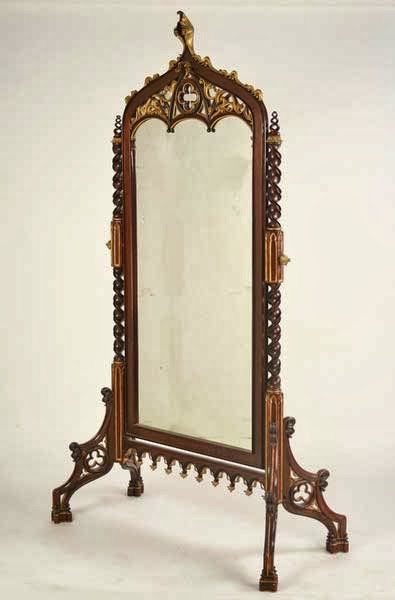During the late Middle Ages, or the Medieval period, which technically lasted from the 5th to the 15th centuries, there was a movement in art and architecture that saw an ornate sensibility unlike the heavy-handed architecture that came before it. This style did not have an identifying name at the time, but a hundred years later during the Renaissance it was dubbed "Gothic," an insult. The "Gothic" style was perceived as coming from an antiquated period when the world was under the tyranny of the church. The Renaissance of course was a rebirth and a period of secular progress, now that the superstitious stranglehold of the church had been broken. The Renaissance looked back and saw a "barbarous" and "unrefined" style that they traced back, in their understanding, to the Visigoths who sacked Rome in 410 A.C.E.
But in the late Middle Ages, the style actually had its origins in France where advances were being made in architecture. Instead of the typical Romanesque features of barrel vaulted ceilings and rounded arches, we can look back and see the development of flying buttresses and pointed arches for doors and window openings. This technological advance allowed windows to become larger, taller, and more open as opposed to the smaller openings necessitated by earlier heavy stone walls. Windows became decorated with tracery designs that included the trefoil (meaning three leaf), a figure with three overlapping rings. While there was also a cinqefoil (a design with five rings), the most popular proved to be the quatrefoil, with four symmetrically, and therefore pleasantly placed circles. This tracery is one of the hallmarks of what we now know as Gothic architecture, furniture, and art. Below we see tre-, quatre-, and cinquefoils (in French: trois = three, quatre = four, cinq = five)
In terms of architecture, some of the best known Gothic buildings are Notre Dame de Paris, located on the Île de la Cité in Paris...
...and Sainte Chapelle also on the Île de la Cité (at the opposite end of the island), seen below (notice how the extremely tall pointed windows create an almost entire wall of stained glass).
But what does this mean in terms of interiors and furnishings? Well, as usual, architecture, societal mores, and political beliefs informed the way people lived, as it does now. And when we look at Gothic interiors and furnishings, we see reflected there the pointed arches, quatrefoils, spires, and ornate tracery of cathedrals.
I create these History of Furniture posts not only to educate about interior styles, but to help take away the mystery about and confusion over antique furniture, and to help people feel confident in identifying pieces in the field. But I want to mention that when identifying pieces of Gothic furniture, what you will most often find are pieces from the Gothic Revival dating from the late 1700s, and into the 1800s. It would be rare for anyone to find an authentic piece of Medieval furniture...but even if you never do, you can still identify the style however you may encounter it.
Happy designing!











No comments:
Post a Comment